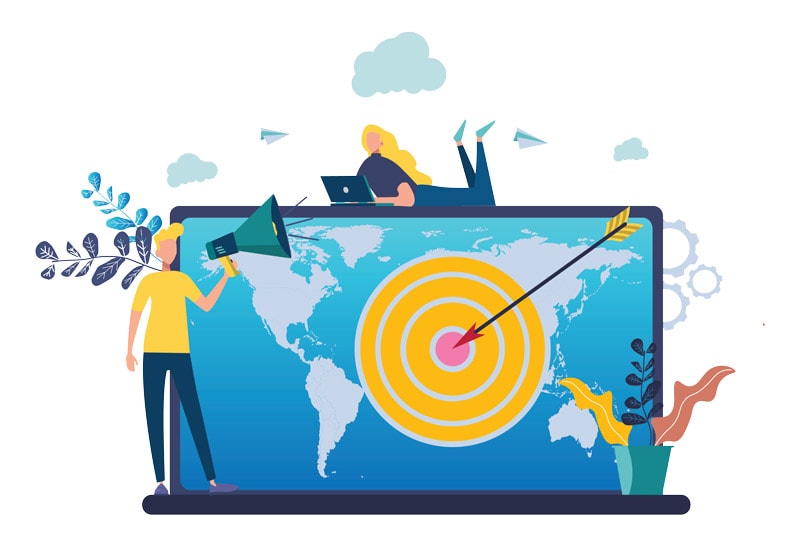Industrial Website Design Strategy — Knowing Your Audience

Before launching a new Industrial web design for any industrial company—or any major new marketing undertaking, for that matter—it’s important to know what you want to achieve.
Once you’ve defined your needs and goals, whether for a new site, or for improving or redesigning your existing website, you need to figure out who it’s for. Who’s your audience?
Your best customers are not just any customers
There is no one-size-fits-all approach to marketing, especially not in B2B industrial companies with niche audiences and complex products and services. These offerings are not for anyone and everyone, and if you approach your website and marketing with the idea of casting a wide net, you’ll miss the mark. To be truly effective, each piece of your marketing and content needs to be laser focused on attracting, engaging, and converting the very specific people who will come to represent your best customers.
Truly knowing your audience is one of the key principles of a great industrial website’s design and strategy.
Defining your audience: the basic steps
There tend to be two polar extremes in approaching a definition of audience. On one hand, consulting companies and large agencies might insist on months of detailed research and investigation, pulling together exquisitely detailed personas and market research before taking any further steps to build a client’s website. On the other hand, a CEO or other internal stakeholders might insist that they’ll “sell to anybody who can use our products! Why would we limit ourselves?”
Neither extreme is ideal.
We believe the best approach for your B2B industrial marketing website lies somewhere in the middle, a sweet spot balancing effort and results. It’s important to do the work to identify who you’re talking to and what they’re looking for, but you also want to get the right information out there so that the audience you’ve identified can buy from you sooner rather than later. By focusing your website on your best prospects and guiding them along a path toward what you most want them to do, you’ll make your website an effective, lead-generating, sales and marketing tool.
Here are the basic steps:
- Identify your highest value customer groups and define your ICP
- Understand key persona patterns for B2B technical companies
- Interview a few key customers to get more detail on what they’re looking for
- Create high-level personas
To be clear: your ICP or Ideal Customer Profile describes the ideal company that is your customer. Personas describe the individuals within those companies. Both concepts are important, but we recommend keeping it simple by focusing on ICP first, then high-level personas.
Defining your ICP (Ideal Customer Profile)
Seeing the entire website through the eyes of your highest-value customer groups will create a positive customer experience and greater lead generation. Targeting ideal customers doesn’t preclude serving other customers, too. But you want to make it easy for your ideal customers to find you and to feel they’re in the right place.
What to ask the sales team
Your sales team will be a valuable source of insights, starting with: Who are your current and past highest value customers? What makes them valuable?
Among high-value customers and prospects, find out about their buying teams. What can your salespeople tell you about who’s on the buying team? On that team, who is usually doing the research? Who is leading the inquiry? And who makes the final decision?
Define patterns for ideal customers based on:
- Company Size (in terms of both dollars and number of people)
- Project Size (in dollars)
- Annual Budget (in dollars, for the product or service you provide)
- Industries or groups of industries
- Geography
Identify four-to-six customers you wish you could replicate. What do these customers have in common?
In terms of your company’s offerings, which ones currently deliver the best customer lifetime value to your company? Which ones bring in the highest margin? And which offerings are an easy-to-sell way to begin a relationship that can be cultivated over time to turn a new customer into a larger, long-term customer?
Summarize your ICP findings
From the information you’ve gathered, flesh out specifics or ranges for company size, project size and annual budget. What types of projects, needs and applications characterize ideal customers? Rank the top three industries or groups of industries, and don’t forget about geography. If your company serves a specific geographic region, this will automatically narrow your focus.
Understanding key persona patterns
As you flesh out your ICP, you’ll see a pattern of one or two key people coming up in the buying cycle. Typically, we see two, sometimes three, primary archetypes among B2B and industrial buyers.
The most important of these persona archetypes are The Influencer and The Buyer. The Influencer is usually an engineer or another technical specifier or designer. They don’t sign off on the final purchase, but they make recommendations and validate decisions. They might find you while working on sourcing vendors for new projects or trying to solve a particular problem.
The Buyer is a high-level corporate person doing due diligence. They care about cost, performance and delivery. They rely on The Influencer to vet potential vendors. The Buyer wants to see a website that signals credibility and a sense that the supplier will continue to be around in the future.
Another persona you might target is The End User, who will influence lifetime sales and may be empowered to search for alternatives to a failed technology.
Interviewing customers
If possible, interview a few customers and/or prospects to gather additional input for creating ICPs and personas. From your conversations with the sales team, identify four-to-six names of people to talk to. Here are a few questions to ask and then analyze for patterns:
- What are their challenges?
- What are they looking for in a partner, supplier or vendor?
- What information and content is helpful for them in different phases of the buying cycle?
This article provides additional sample persona interview questions as well as other tips.
Creating high-level personas
Start with the basic archetypes and flesh out specifics based on discussions with your sales team and any interviews you do. Of course, the patterns of your research might reveal different or additional personas, but try not to get too granular. You don’t need seven or eight personas.
Here’s an outline you can use to pull together some details for each persona in a simple Word document or Google Doc:
- Age range
- What is their day like?
- What keeps them up at night?
- What do they call the solution?
- How do they search for it?
- How do they benefit from your offerings?
Make your website resonate with your core audience
The most important activities to help you clearly articulate the audience segments for your B2B industrial web design are:
- Identifying highest value offerings/services/products
- Identifying ICP and personas
- Identifying any secondary classification of importance (such as industries, applications, etc.)
Knowing your audience is one of our eight key principles of B2B website strategy. A great industrial marketing website is designed to be a match between what your customer is looking for and what you want to show them. Your website can serve information to anyone interested in learning more about your offerings, but you want it to resonate the most with, and speak the most clearly to, your core audience, as defined by a type of company, persona(s) within that company, and what they’re looking for.
Looking for a deeper understanding of when, why and how to redesign your B2B website? Check out a webinar, or learn more about our upcoming on-demand virtual course, B2B Website Strategy for Lead Generation.


